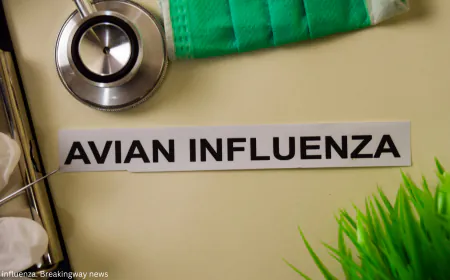Cardiac Arrest: Understanding Causes, Risks, and Prevention
Understand the causes, risks, and prevention of cardiac arrest. Stay informed with expert health insights from Breaking Way.

Cardiac arrest is a life-threatening emergency that occurs when the heart suddenly stops pumping blood to the body. Unlike a heart attack, which is caused by a blockage in the blood supply to the heart, cardiac arrest is often due to an electrical malfunction that disrupts the heart's rhythm. Immediate medical intervention is critical to survival, and knowing the signs, risk factors, and treatment options can make a life-saving difference.
What Is Cardiac Arrest?
Cardiac arrest occurs when the heart’s electrical system experiences a severe disruption, causing it to lose its ability to pump blood effectively. As a result, the circulation of blood to essential organs like the brain halts, which, if left untreated, can lead to death within minutes. While it can strike anyone, certain factors can significantly elevate the risk.
Who Is at Risk for Cardiac Arrest?
Cardiac arrest doesn't discriminate, but some populations are more vulnerable. According to recent statistics from the American Heart Association, about 350,000 out-of-hospital cardiac arrests occur in the U.S. annually. Men are statistically more likely to experience cardiac arrest than women, with older adults, particularly those over 65, being most at risk. Other high-risk groups include:
- People with a history of heart disease (especially coronary artery disease or heart attacks).
- Those with arrhythmias (irregular heartbeats).
- Smokers, people with high blood pressure, and those with diabetes.
- Athletes in intense sports can also be at risk, particularly if they have undiagnosed heart conditions.
Signs and Symptoms of Cardiac Arrest
Identifying the symptoms of cardiac arrest quickly is crucial for prompt and life-saving action. The most common signs include:
- Sudden collapse or fainting.
- No pulse or breathing.
- Loss of consciousness.
If these symptoms are observed, performing CPR and using an automated external defibrillator (AED) immediately can greatly improve the chances of survival.

What Causes Cardiac Arrest?
The most common causes of cardiac arrest:
- Coronary artery disease: Blocked arteries reduce blood flow, leading to damage to the heart’s electrical system.
- Heart attacks: These can weaken the heart muscle and lead to electrical malfunctions.
- Arrhythmias: Specifically, ventricular fibrillation, where the heart's lower chambers quiver instead of pumping blood.
- Genetic conditions: Certain inherited diseases, like Brugada syndrome, can increase the risk of cardiac arrest.
Preventing Cardiac Arrest: How to Reduce Your Risk
Though cardiac arrest can happen suddenly, certain lifestyle changes and medical interventions can reduce the risk:
1. Maintain a Heart-Healthy Diet: Diets rich in fruits, vegetables, whole grains, and lean proteins can help reduce cholesterol and keep your heart in top condition.
2. Exercise Regularly: Regular physical activity, even moderate exercise like walking, strengthens the heart and lowers blood pressure.
3. Control Chronic Conditions: Managing conditions like high blood pressure, diabetes, and high cholesterol with medications and lifestyle changes can significantly reduce risk.
4. Quit Smoking: Smoking is a significant contributor to heart disease and dramatically raises the risk of experiencing cardiac arrest.
How to Treat and Manage Cardiac Arrest Long-Term
Surviving cardiac arrest often requires quick and decisive action. If a person collapses and stops breathing, performing CPR and using an AED can be life-saving. Once the individual is stabilized, treatments may include:
- Medications to control arrhythmias or heart disease.
- Implantable cardioverter-defibrillators for those at high risk.
- Surgery to correct the structural of heart issues or improve blood flow.
Long-term management may involve regular monitoring by a cardiologist and lifestyle adjustments to reduce future risks.
Conclusion: Raising Awareness About Cardiac Arrest
Cardiac arrest remains one of the leading causes of death worldwide, but with prompt action and awareness, survival rates can improve. Knowing the symptoms, risks, and preventive measures can help save lives. If you or someone you love is at risk, discuss preventive measures with a healthcare provider.
For more detailed information on cardiac arrest and CPR, you can refer to the American Heart Association .
Sources
1. American Heart Association: Out-of-hospital cardiac arrest statistics.
2. National Institutes of Health (NIH): Studies on survival rates after cardiac arrest.
What's Your Reaction?




















































